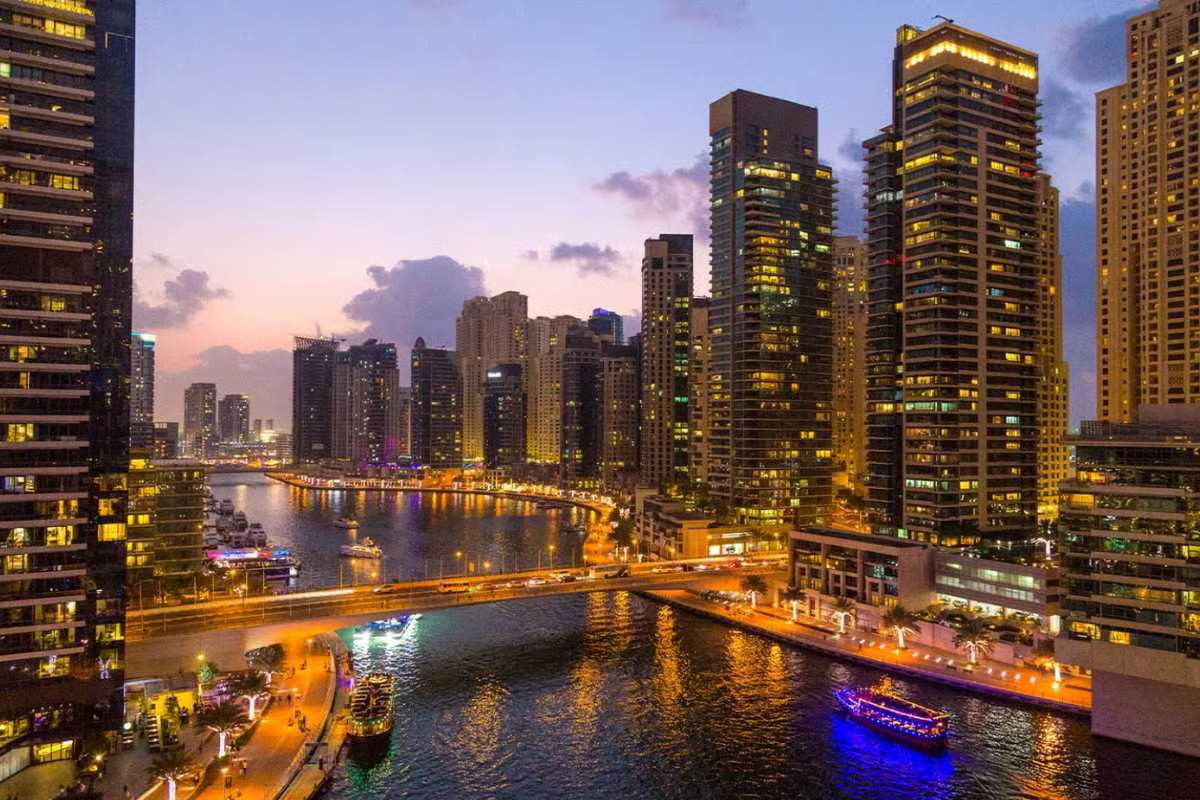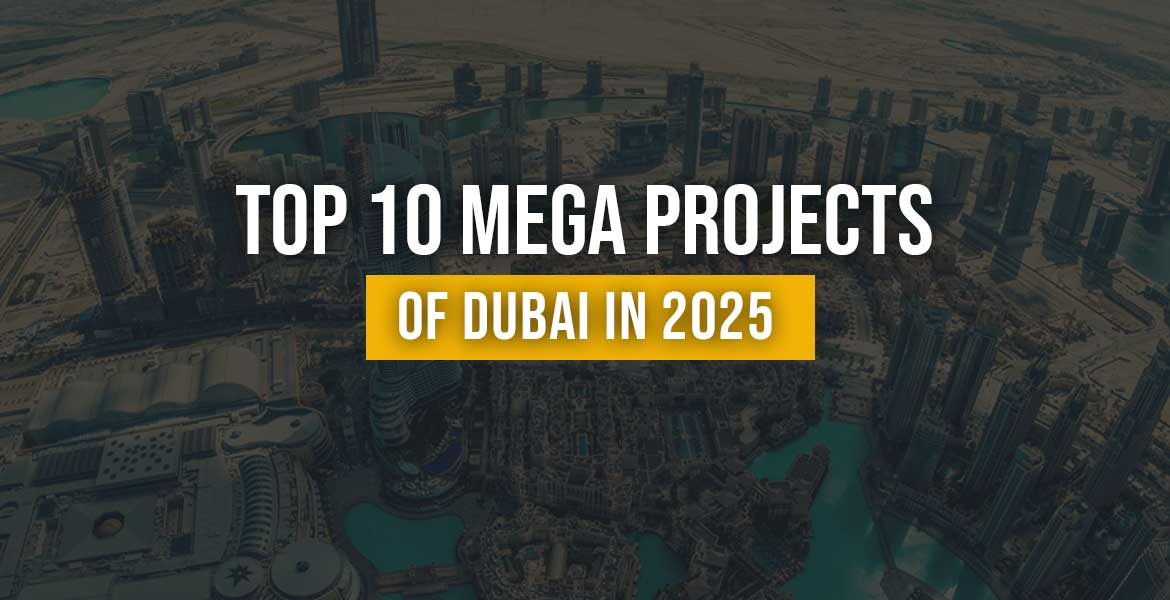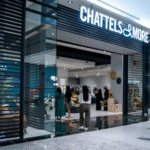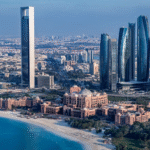Now Reading: Dubai Real Estate Forecast: Future of Housing and Luxury Living
-
01
Dubai Real Estate Forecast: Future of Housing and Luxury Living
Dubai Real Estate Forecast: Future of Housing and Luxury Living
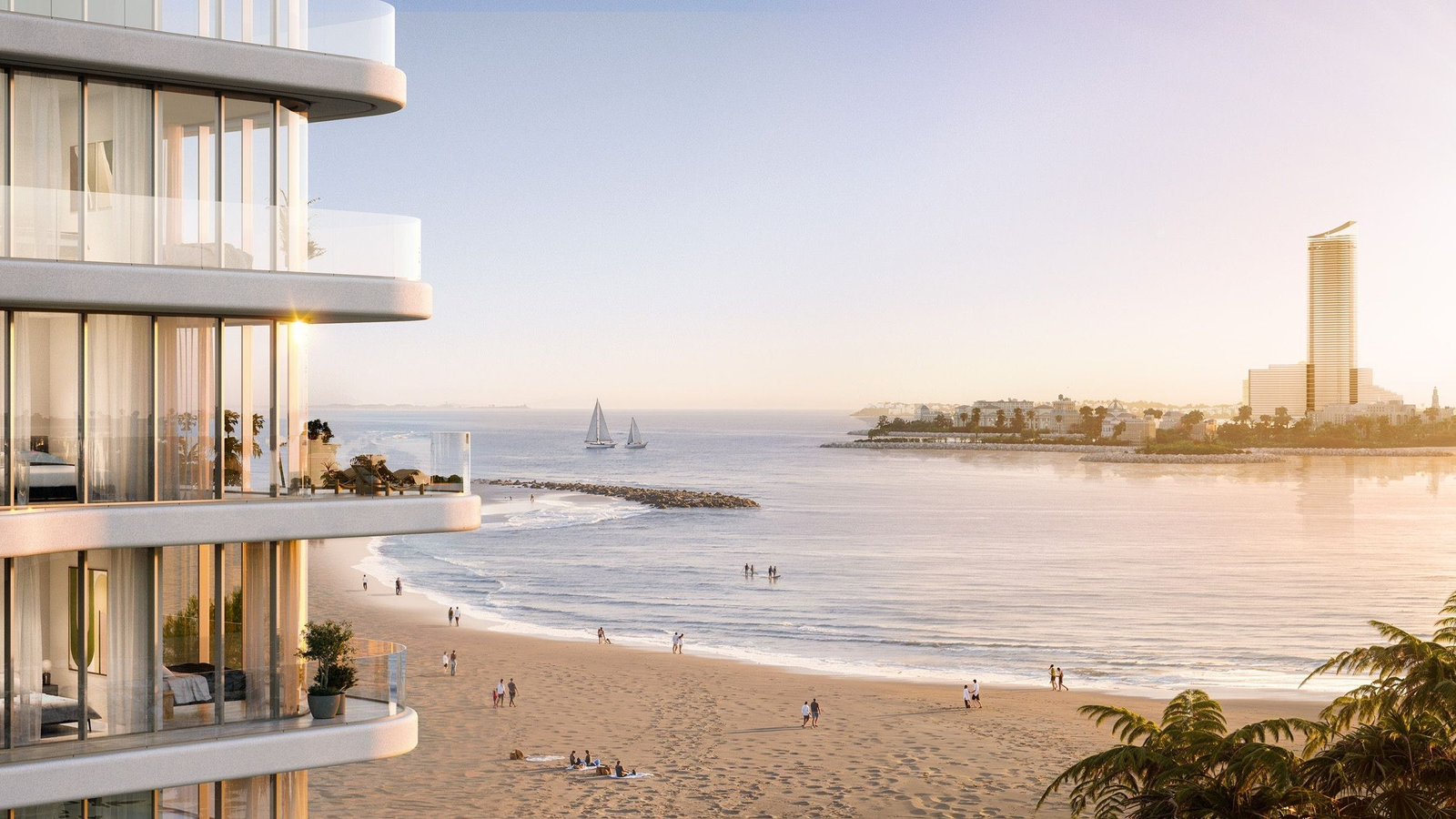
Table of Contents
Imagine stepping into your Dubai home, where a soft voice command lifts the blinds to reveal a golden sunrise over a serene lagoon, your coffee brews automatically in a sustainable kitchen, and expansive windows frame a vibrant community plaza or a tranquil wellness garden. You start your day with a family yoga session on the rooftop terrace, followed by a quick commute to a co-working hub within the neighborhood, feeling the seamless blend of luxury and everyday convenience.
It’s August 2025, and Dubai’s real estate market is buzzing with excitement, driven by innovative housing and luxury living trends in areas like Dubai Hills Estate, Tilal Al Ghaf, and Palm Jumeirah. With 96,000 transactions worth $87 billion in the first half, up 15% from 2024, and 55% of buyers from the UK, India, Russia, and China, Dubai is a global investment beacon. Offering 100% freehold ownership, a dirham pegged to the U.S. dollar, and no personal income tax, capital gains tax, or annual property taxes, properties priced from $500,000 to $10 million deliver 5-7% rental yields and 7-10% price appreciation, outpacing London (2-4%) and New York (2-3%).
Properties over $545,000 qualify for a 10-year Golden Visa, while those at $204,000 grant 2-year residency. Fueled by 25 million tourists and a 4% population surge, Dubai’s 2025 forecast highlights wellness, sustainability, and smart living as the future of housing and luxury. Navigating fees, VAT, and regulations is your key to securing a radiant investment in this dynamic city.
Wellness and Sustainability Shaping Future Housing
Dubai’s 2025 housing market is evolving with a focus on wellness and sustainability, creating communities where health and eco-conscious living are at the core. Areas like Dubai Hills Estate offer biophilic designs, smart air purifiers, and wellness parks with yoga studios and green trails, appealing to families and professionals seeking balanced lifestyles. Priced at $500,000-$3 million, these properties yield $25,000-$150,000 annually, tax-free, saving $9,250-$67,500 compared to the U.S. (37%) or UK (45%).
Selling a $1 million home for $1.1 million (10% appreciation) nets a $100,000 tax-free profit, saving $20,000-$28,000 versus London (20-28%) or New York (20-37%). No property taxes save $5,000-$30,000 yearly, unlike London’s council tax (up to 2%) or New York’s property tax (1-2%). Residential purchases skip 5% VAT ($25,000-$150,000), and amenities like meditation gardens drive 7-10% price growth. With 85-90% occupancy, this trend attracts GCC and UK buyers, making wellness the heartbeat of Dubai’s future housing.
Wellness and sustainability feel like a vibrant breath of fresh air for future living.
Smart Technology Revolutionizing Luxury Living
Smart technology is a 2025 hallmark in Dubai’s luxury real estate, with projects like Tilal Al Ghaf featuring AI-driven climate control, voice-activated systems, and wellness apps that monitor health metrics. Located 20 minutes from Dubai Marina, these $500,000-$5 million properties yield $25,000-$350,000 annually, tax-free, saving $9,250-$157,500. Short-term rentals, boosted by 25 million tourists, require a DTCM license ($408-$816), increasing yields by 10-15% ($2,500-$52,500).
Long-term leases need Ejari registration ($54-$136). Non-compliance risks fines up to $13,612. With IoT-enabled fitness zones and sustainable retail, these homes drive 85-90% occupancy and 7-10% price growth, delivering a 7-10% ROI. Indian and Russian buyers are drawn to this tech-luxury fusion, positioning Dubai as a leader in intelligent living.
Smart technology feels like a vibrant spark igniting luxurious, effortless days.
Palm Jumeirah: Iconic Waterfront for Timeless Luxury
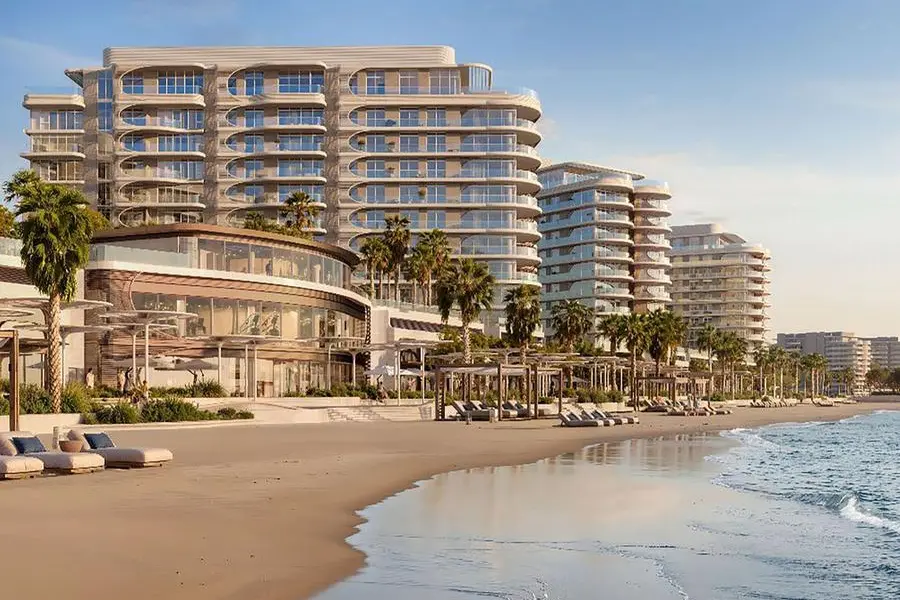
Palm Jumeirah, Nakheel’s iconic man-made island, remains a 2025 luxury staple with beachfront villas and penthouses featuring private infinity pools, smart automation, and exclusive beach clubs. Priced at $2 million-$10 million, these properties yield $100,000-$500,000 annually, tax-free, saving $37,000-$225,000. Selling a $5 million villa for $5.5 million yields a $500,000 tax-free profit, saving $100,000-$140,000.
No property taxes save $20,000-$100,000 yearly, and VAT exemptions save $100,000-$500,000. Maintenance fees ($10,000-$50,000) cover private marinas and elite amenities, with a 5% municipality fee ($5,000-$25,000) on rentals. With 90-95% occupancy and 7-10% price growth, Palm Jumeirah attracts ultra-high-net buyers from Russia and Europe, blending timeless luxury with modern trends.
Palm Jumeirah feels like a radiant, iconic oasis for enduring elegance.
No Personal Income Tax: A Financial Future Booster
Dubai’s no personal income tax policy powers 2025’s housing and luxury market, letting investors keep 100% of rental income. A $500,000 Dubai Hills Estate apartment yields $25,000-$35,000, saving $9,250-$15,750; a $10 million Palm Jumeirah villa yields $400,000-$500,000, saving $180,000-$225,000. Short-term rentals require a DTCM license ($408-$816), boosting yields by 10-15%. Long-term leases need Ejari registration ($54-$136). A 5% municipality fee ($1,250-$25,000) applies, with fines up to $13,612 for non-compliance. High occupancy from wellness and luxury amenities ensures this tax advantage drives Dubai’s future growth.
Tax-free rentals feel like a refreshing wave of financial prosperity.
Zero Capital Gains Tax: Preserving Future Wealth
Zero capital gains tax ensures investors keep 100% of sale profits, a key 2025 driver. Selling a $1 million Tilal Al Ghaf home for $1.1 million yields a $100,000 tax-free profit, saving $20,000-$28,000. A $10 million Palm Jumeirah property sold for $11 million delivers a $1 million tax-free gain, saving $200,000-$280,000. With 7-10% price growth, Dubai outshines global markets. A 4% DLD fee ($20,000-$400,000), often split, applies, but tax-free profits preserve wealth for future-focused buyers.
Keeping every dirham feels like a radiant triumph of strategic investing.
No Annual Property Taxes: Simplifying Future Ownership
No annual property taxes save $5,000-$100,000 yearly on $500,000-$10 million properties, unlike London’s council tax ($3,000-$30,000) or New York’s property tax (1-2%). Maintenance fees ($5,000-$50,000) cover wellness hubs and smart security, with a 5% municipality fee ($1,250-$25,000) on rentals. This simplicity attracts buyers seeking hassle-free investments in Dubai’s 2025 market.
No property taxes feel like a gentle breeze easing your investment journey.
VAT Rules: A Strategic Financial Edge
Residential purchases skip 5% VAT, saving $25,000-$500,000 on $500,000-$10 million properties. Off-plan purchases incur 5% VAT on developer fees ($2,500-$50,000), recoverable via FTA registration ($500-$1,000). Short-term rental operators register for VAT if revenue exceeds $102,041, charging 5% but claiming credits on DTCM fees ($408-$816). A $500,000 home yielding $25,000-$35,000 incurs $1,250-$1,750 in VAT, with $400-$600 in credits. Non-compliance risks fines up to $13,612, so diligent record-keeping is key for 2025 investors.
VAT exemptions feel like a clever boost to your financial strategy.
DLD Fees and Title Deeds: Securing Future Investments
The 4% DLD fee, typically split, applies: $20,000 for a $500,000 home or $400,000 for a $10 million villa. Gift transfers to family reduce DLD to 0.125%, saving $19,375-$387,500. Title deed issuance costs $136-$272, requiring DLD registration. Broker fees (2%, $10,000-$200,000) may be waived for off-plan projects. Mortgage registration (0.25% of loan, $1,250-$25,000) and valuation fees ($680-$1,360) apply for financed deals. The 2025 Oqood system ensures escrow compliance, securing investments in Dubai’s future market.
Title deeds feel like the key to your radiant, growth-driven wealth.
Corporate Tax: Navigating 2025 Investments
Introduced in 2023, the 9% corporate tax applies to profits over $102,110. A $10 million Palm Jumeirah villa yielding $400,000-$500,000 incurs $36,000-$45,000, reducing net income to $364,000-$455,000. QFZP status avoids this, saving $36,000-$45,000, with setup costs of $2,000-$5,000. Small business relief waives tax for revenues under $816,000 until December 31, 2026. Individual ownership skips this tax, ideal for most 2025 investors.
Corporate tax feels like a navigable ripple in your investment strategy.
New Tax Rules for 2025
The Domestic Minimum Top-up Tax (DMTT), effective January 1, 2025, imposes a 15% tax on multinationals with revenues over €750 million ($793 million). Individual investors are unaffected, and QFZP status avoids DMTT, saving $7,500-$75,000. Cabinet Decision No. 34 exempts corporate tax for QIFs with real estate income below 10%. A QIF earning $2 million, with $200,000 from rentals, faces 9% tax ($16,200) on 90% ($1.8 million). A July 2025 policy allows depreciation deductions, saving $1,818-$18,182 annually for a $1 million home revalued at $1.1 million. These rules enhance Dubai’s 2025 forecast.
New tax rules feel like a puzzle with prosperous solutions.
Top Projects for 2025 Insights and Trends
1. Dubai Hills Estate: Urban Wellness Leader
Dubai Hills Estate ($500,000-$3 million) offers 5-7% yields and 7-10% price growth, delivering a 7-10% ROI with yoga studios and co-working hubs. A $1 million home yields $50,000-$70,000 tax-free, saving $18,500-$31,500. Selling for $1.1 million yields a $100,000 tax-free profit. No property taxes save $5,000-$30,000, and VAT exemption saves $25,000-$150,000. Maintenance fees are $5,000-$15,000. QFZP saves $4,500-$6,300. U.S. investors deduct depreciation ($9,091-$27,273), saving up to $9,545.
Dubai Hills Estate feels like a radiant, high-growth urban masterpiece.
2. Tilal Al Ghaf: Smart Wellness Innovator
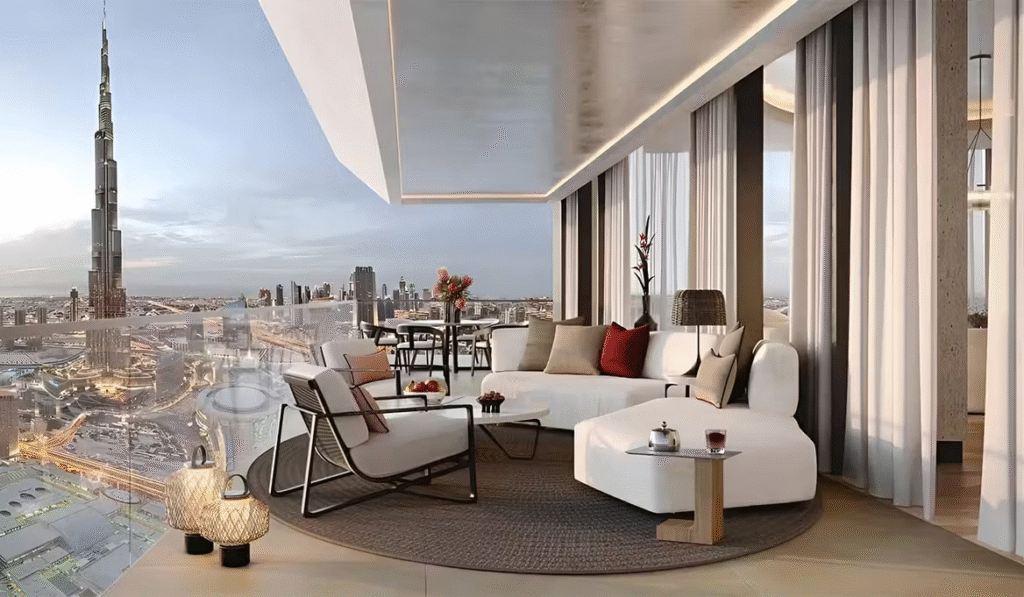
Tilal Al Ghaf ($500,000-$5 million) offers 5-7% yields and 7-10% price growth, delivering a 7-10% ROI with mindfulness pavilions. A $1 million villa yields $50,000-$70,000 tax-free, saving $18,500-$31,500. Selling for $1.1 million yields a $100,000 tax-free profit. No property taxes save $5,000-$50,000, and VAT exemption saves $25,000-$250,000. Maintenance fees are $5,000-$25,000. QFZP saves $4,500-$6,300. U.S. investors deduct depreciation ($9,091-$45,455), saving up to $15,909.
Tilal Al Ghaf feels like a vibrant, innovative growth haven.
3. The Sustainable City: Eco-Wellness Champion
The Sustainable City ($500,000-$2 million) offers 5-7% yields and 7-10% price growth, delivering a 7-10% ROI with net-zero villas. A $1 million home yields $50,000-$70,000 tax-free, saving $18,500-$31,500. Selling for $1.1 million yields a $100,000 tax-free profit. No property taxes save $5,000-$20,000, and VAT exemption saves $25,000-$100,000. Maintenance fees are $5,000-$10,000. QFZP saves $4,500-$6,300. U.S. investors deduct depreciation ($9,091-$18,182), saving up to $6,364.
The Sustainable City feels like a radiant, green profit oasis.
Why Dubai’s 2025 Market Shines
Price Range: The Sustainable City ($500,000-$2 million) and Dubai Hills Estate ($500,000-$3 million) suit mid-tier investors; Tilal Al Ghaf ($500,000-$5 million) attracts affluent buyers.
Rental Yields: 5-7%, with Tilal Al Ghaf at 5-7% for short-term rentals; others at 5-6% for stable leases.
Price Appreciation: 7-10%, driven by wellness, sustainability, and smart tech.
Lifestyle: Smart systems, wellness hubs, and green spaces create vibrant living.
Market Drivers: Golden Visas, tax-free income, and high occupancy fuel growth.
ROI Verdict: 7-10% ROI, blending lifestyle with strong financial rewards.
Dubai’s 2025 market feels like a radiant, unstoppable force.
Strategies to Maximize Returns
For individuals: Hold properties personally to avoid corporate taxes, saving $2,700-$31,500. Negotiate DLD fee splits, saving $10,000-$100,000. Use gift transfers to reduce DLD to 0.125%, saving $19,375-$193,750. Recover 5% VAT on developer fees via FTA registration ($500-$1,000). Leverage double taxation treaties with 130+ countries, saving $9,250-$157,500. U.S. investors deduct depreciation ($9,091-$45,455), saving up to $15,909. For corporates: Secure QFZP status, keep QIF income below 10%, and claim depreciation deductions. Hire property managers ($5,000-$25,000 annually) and tax professionals ($1,000-$3,000) to avoid fines up to $13,612.
These strategies feel like a roadmap to your vibrant, prosperous wealth.
Risks to Watch in 2025
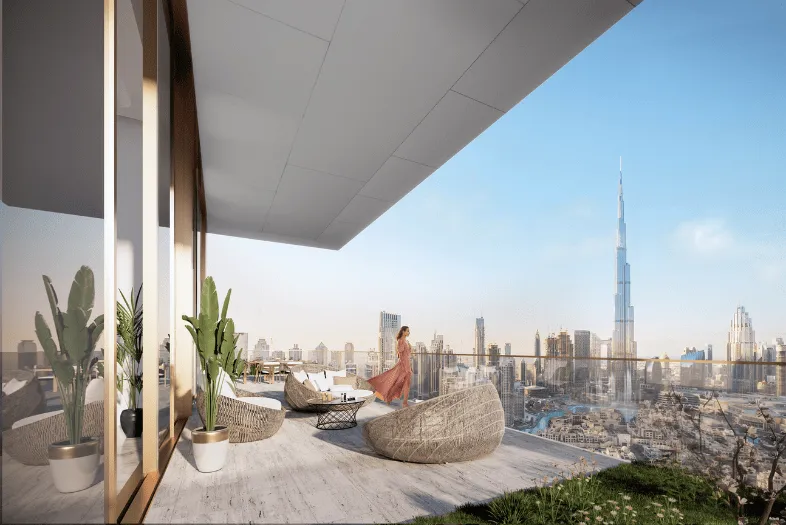
A projected oversupply of 182,000 units by 2026 may slightly slow price growth in newer Tilal Al Ghaf phases, but Dubai Hills Estate and The Sustainable City remain resilient due to wellness and sustainability demand. Off-plan delays risk setbacks, so choose trusted developers like Emaar or SEE Holding and verify escrow compliance via the 2025 Oqood system. Non-compliance with VAT or DTCM rules risks fines up to $13,612, and corporate tax errors can cost $13,612. Indian investors must report properties in India’s Foreign Asset schedule to avoid $135,000 penalties. Currency fluctuations, though minimal with the dollar peg, could impact returns.
Why Dubai’s Growth Continues
With 7-10% ROI, 7-10% price growth, and tax-free savings of $5,000-$250,000 annually, Dubai’s top projects Dubai Hills Estate, Tilal Al Ghaf, and The Sustainable City offer vibrant residences, innovative amenities, and unmatched financial rewards. Golden Visa perks, high occupancy, and trends like wellness and smart tech make Dubai a global standout. Navigate fees, secure your radiant investment, and thrive in this dynamic, future-focused market.
read more: Real Estate Investment 2025: Why Dubai Stands Out Among Global Cities



